Wavetouch Audio Grand Teton Loudspeaker
Higgs Boson Found!
 Higgs boson: It’s always been here. We’ve never seen it before. Finally, it’s been discovered! This is my take on the new Wavetouch Grand Teton loudspeaker and its synergistic blend of cabinet design and drivers, and its internal wiring and crossover parts. It is both the David and Goliath of speakers, being very small, yet producing lifelike sound that is BIG, dynamic and superbly detailed.
Higgs boson: It’s always been here. We’ve never seen it before. Finally, it’s been discovered! This is my take on the new Wavetouch Grand Teton loudspeaker and its synergistic blend of cabinet design and drivers, and its internal wiring and crossover parts. It is both the David and Goliath of speakers, being very small, yet producing lifelike sound that is BIG, dynamic and superbly detailed.
The designer, Mr. Alex Yoon of Wavetouch Audio has been an audiophile and music lover for over 30 years. Until now, he has never been able to find a speaker that could satisfy his (and his wife Jackie’s) expectations for realistic music reproduction, so he decided to build speakers of his own design. Alex has been refining his Wavetouch technology used in the Wavetouch GT for the past 5 years and has received some very enthusiastic praise from some very critical listeners.
Here we are dealing with a rather tiny 12″h x 7.5″w x 10″d two-way speaker with a 5.25” mid-woofer made by SB Acoustics, and a Heil-type AMT tweeter that will deliver 94 dB for 1-watt input and span the frequency range of 40Hz to 25kHz with aplomb. A speaker that sounds uncompressed, natural, and finely detailed. How it can have such a small cabinet and high efficiency and still produce BIG dynamic sound with articulate bass to 40Hz is a mystery to me, but I’m delighted that it does so!
My review samples had the Baltic Birch plywood cabinets with Chinese Tung oil finish (no veneer here and made in the USA). It’s a light but very classy looking wood and to top it off they come with tasteful metallic green horns—to increase directivity and output—as well as tubed waveguides that are hung in place by monofilament strung through the horns. While this may appear to be rather unusual, I can attest that it is very effective in limiting room interference and “detangling” the sound waves for clearer, cleaner sound. Below is a picture of the Grand Tetons, and a diagram illustrating how the waveguides work to clarify the sound waves.
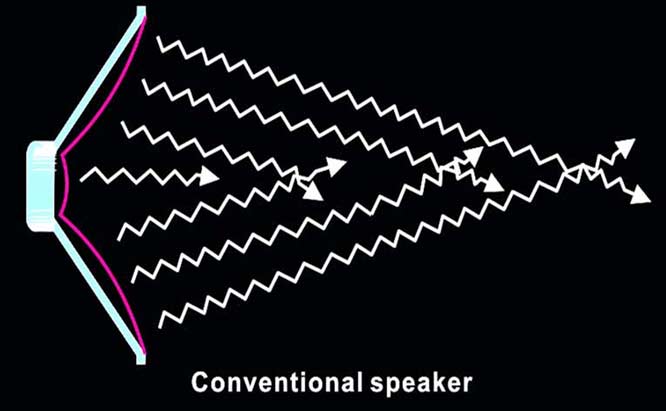

As you can see in the diagram, with Wavetouch technology the sound waves are not crossing over, tangling and interfering with each other. This makes for clearer, more cohesive and solid sound and the horns add to the efficacy of this technology.
Sum of the parts
The Grand Teton is one of those speaker designs where its performance seems to transcend the sum of its parts. Its parts are definitely of high quality—make no mistake. Although the SB Acoustics 5.25” mid-woofer and the 1.4” x 1” Air Motion Transformer are high-end transducers, they are not in the upper strata of ultra-expensive high-end drivers. Yet they work exceedingly well together as do the other ingredients in this gourmet dessert for the ears. The two-way system uses a 2nd order crossover at 3kHz.
In the land where MDF is king, the Grand Teton’s internally damped Russian Baltic Birch plywood cabinet is a comparative work of art. It is solid, gorgeous and contributes to the Grand Teton’s spirited sound quality. And Wavetouch did not skimp on the internals. All positive-leg wiring is NordostFlatline, and beefy Solen audiophile grade capacitors are used to roll the woofer response while a film/foil Audiocap is used for the tweeter. This great hardwired crossover also boasts Jantzen copper foil inductors instead of the less expensive transformer-wire coils seen in most loudspeaker designs. Interestingly, the wire connections in the Baltic Birch Grand Teton are all soldered while the connections in the Chinese-made Piano Black MDF cabinets use wire nuts. Since the price of the US handmade Russian Baltic Birch Grand Teton is $1,500 higher than that of the Piano Black MDF Grand Teton ($3,500 vs $2,000), this is another area where you get a bit more by going with the higher-priced handmade GT.
Below is a picture of the crossover in situ. Notice the lack of a printed-circuit board…
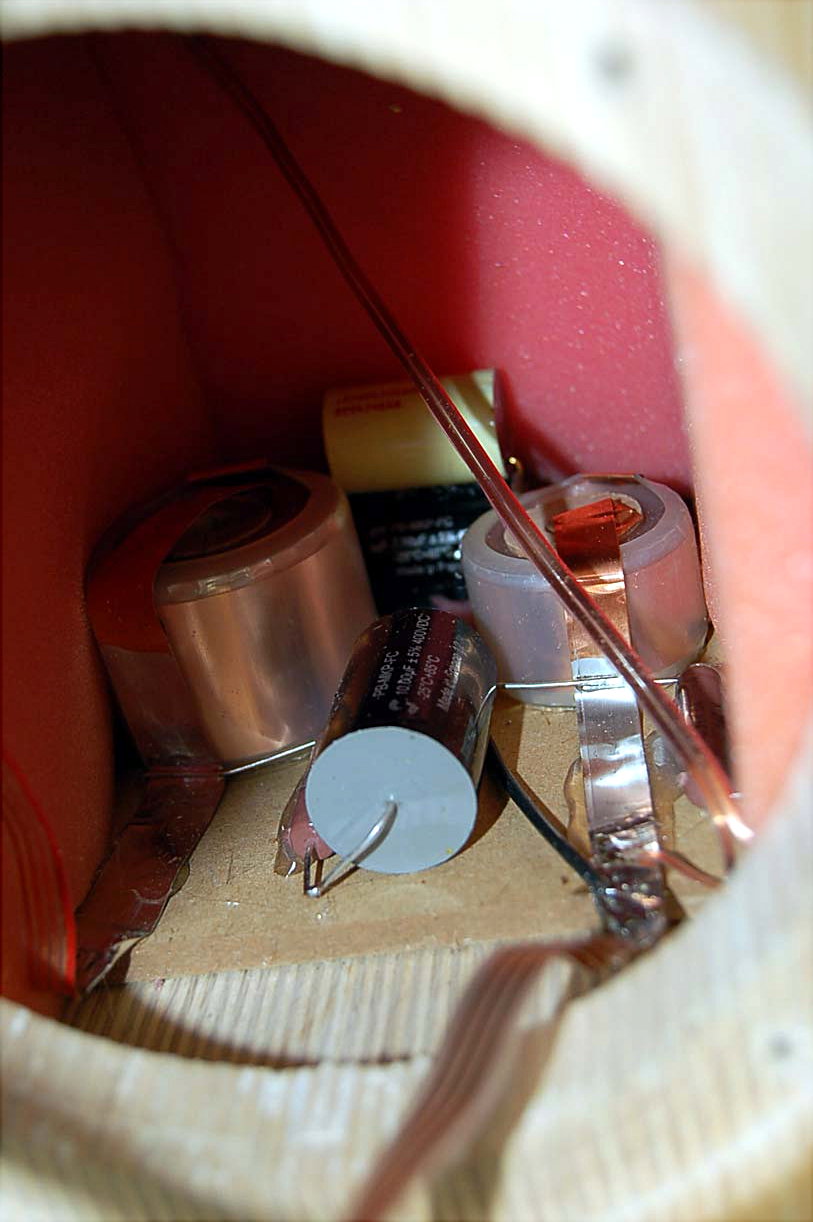
(I’ll have to request a print of this to hang on my wall behind the speakers!)
Set up
When I received the Grand Tetons I also received set-up instructions that advised to set the speakers wide and angled in at the seated listener or to cross just slightly in front of the listener. Tilting the speakers back a bit was also suggested. I was also told by Alex Yoon of Wavetouch Audio that since the Grand Tetons can play at a healthy level and are quite dynamic they can be used in large or small rooms.
But Yoon did recommend using stereo subwoofers for the best performance in larger rooms and said they could be used with the low crossover point of 40Hz for a seamless blend. He confided that subwoofers blend quite well with the Grand Tetons in his experience.
I set the Grand Tetons up according to the recommended guidelines in my small-room reference system, which measures 14’ x 11’ with a vaulted ceiling. The speakers were spaced 79” apart center-to-center, tilted back on 18” stands and aimed directly at the center-seated listener. It was 50” from the front wall to the front baffle and 24” to each of the side walls. My ears were located 7.5’ back from the front plane of the speakers and 2.5’ from the rear wall.
Initially I thought I would need to use my center-wall 12” powered sub with the Grand Tetons, but as I became familiar with their bass performance I decided that, for my taste, it was not necessary to use the subwoofer—at least this was true with my digital sources. But I did occasionally use the sub with my turntable system and got it to blend seamlessly when crossed low as Mr. Yoon had suggested.
I used the Grand Tetons with turntable, CD, and Computer/USB-DAC sources in order to get a more complete picture of how the speakers performed with different front-end gear. My line preamp is the VTL TL-2.5 and I used my mildly modified Quicksilver GLA (EL-34 push-pull) tube amp for this evaluation. A Monarchy Audio power regenerator is used to isolate and power all my digital front-end gear except the Lenovo laptop, which is battery powered. Later in my evaluation I acquired a pair of nicely modified Dignity Audio DA08SE 300B 8-watt single-ended-triode amplifiers to see how well the Grand Tetons would perform with low-power SET amps (really well, as it turned out!).
Higgs boson speaks
After some positional tweaking of the speakers in the room, my initial reaction to hearing the Wavetouch GT’s was one of awe and disbelief. I couldn’t believe how clear and open they were and the sheer size of their vast soundstage. In my experience, no monitors this small have ever projected such an enveloping, perfectly symmetrical and musically engaging soundfield.
Truth be told, with the Wavetouch technology, the Grand Tetons have all clarity and fine detail of an extremely good set of headphones while developing a most expansive soundstage every bit as wide, deep, layered and immersive as any other speakers I’ve heard to date… quite a neat feat, I’d say!
As good as I suspected the Grand Tetons are I had no idea how they would react being hooked up to the Dignity Audio 300B mono amps. With the Quicksilver GLA, the overall balance was quite even throughout the frequency spectrum, but occasionally I would hit a recording or two where the treble was simply a bit over the top for my personal taste (others may disagree). But the GT’s ultra-clean extended treble is one of its great attributes and part of the reason for its spacious and uber-detailed presentation.
The particular 300B amps I used on the GT’s are known for having more extended treble and bass than most 300B amps due to their Z11 Permalloy, nickel-core transformers manufactured by Tango/ISO. This is why I thought they’d be a good choice for driving the Grand Tetons, and as it turned out I was right.
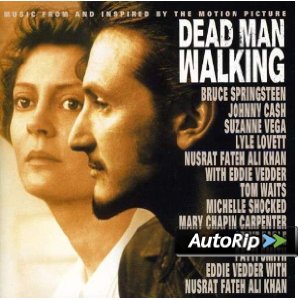 I began playing through the Dead Man Walking Soundtrack CD [Columbia CK 67522] and came upon Patty Smith’s “Walkin Blind”. The thwack of the guitar and Patty’s melodramatic vocal made for quite an intriguing mix. The Grand Teton/Dignity 300B combo gave up all the gritty texture and guttural emotion of Smith’s voice as it sprang out of the speakers as if she were looming right there in front of me. Scary, yet spellbinding!
I began playing through the Dead Man Walking Soundtrack CD [Columbia CK 67522] and came upon Patty Smith’s “Walkin Blind”. The thwack of the guitar and Patty’s melodramatic vocal made for quite an intriguing mix. The Grand Teton/Dignity 300B combo gave up all the gritty texture and guttural emotion of Smith’s voice as it sprang out of the speakers as if she were looming right there in front of me. Scary, yet spellbinding!

Speaking of the thwack of guitars, there are few guitar recordings with more gratuitous thwackery than those from Rodrigo y Gabriela. I whipped out their Live in Japan CD [ATO 880882-16382-2] to get an inkling of what their high-intensity dueling guitars could do on the GT’s and again I was amazed at their macro- and micro-dynamic renderings. The speed at which the transients emerged was cutting-edge fast. Guitars literally leapt out of the speakers and on the changeups when things got soft, I heard some of the sweetest guitar strings this side of Mexico. I take it they had their acoustic guitars amplified because when they thumped on them with their fingers and hands it produced some powerful percussive bass notes.And between this percussive bass and the natural ambient sound of the audience cheering and clapping one gets the distinct notion that the recording took place in a rather large venue.

It’s no secret that Hugh Laurie’s Let Them Talk CD [Warner Bros. R2 527497] has been one of my favorite albums of late. On this particular CD my Tekton Lore-S speakers offer stiff competition. Both speakers are very dimensional and organic sounding on the various vocals and the brass horns shine with a you-are-there type of presence. Hugh Laurie’s piano sounds dynamic and harmonically sweet on both speakers. The places where the Grand Tetons edge ahead of the Lore-S are in its overall clarity, resolution and high-frequency air and extension.
I suppose I would be remiss if I didn’t mention that bass notes are also more distinct when handled by the Grand Tetons. In fact, I think it would be difficult for any speaker to equal the mid-bass articulation and tonality of the Grand Tetons and most speakers, even some highly touted models, don’t even come close. The focus and precision of the GT’s mid-bass allow more details to be heard in the midrange and highs that are usually masked by the comparatively sloppy mid-bass reproduction of competing designs.
On Brandi Carlile’s Bear Creek CD [Columbia 88691 96122 2], the last song on the album, “Just Kids,” Track 13 is a very interesting recording because it sounds like both the lead vocal and backing vocals were recorded in reverse polarity. The vocals are very clear through the Grand Tetons, yet they lack the pinpoint focus of recordings made in the correct polarity. This can be heard on my other systems and speakers as well, but the effect is the most distinct through the Grand Tetons. And at the close of the song, the listener is surrounded by chirping crickets and forest sounds. This effect is quite holographic and the sound field seems to shift back so that the listener is immersed in the forest. The Grand Tetons portray this effect perfectly.
Caveats
The real flaws of the Grand Tetons are that it won’t provide the deepest, room-shaking bass and that it will be picky about the amplification and other components you select to feed it.
The upside is that if you get it right and use neutral components, cabling and AC power filtering products, the Grand Tetons are capable of providing a musical experience that will be difficult for any speaker to equal (and impossible for most). Since the GT’s are very extended in the high frequencies they will likely tend to sound bright when paired with most wide bandwidth solid-state gear. From my own experience I would suggest using a tube amplifier—perhaps one known for having a polite treble profile. The good news is that due to their fairly high efficiency of 94dB/watt, there are many low-powered tube amplifiers that will fill the bill and provide excellent, detailed, non fatiguing sound.
The Dignity Audio 8-watt 300B amplifiers proved to be a superb match for the Grand Tetons in my small room. If rock concert levels are not expected or required, a 30 to 50 watt tube amp should work well in all but the largest rooms. One other peculiarity is that the since the waveguides are delicate, being held in place by monofilament strung through the horns, they would be susceptible to damage by children or the uninformed. The Wavetouch Technology works like magic in practice but caution is advised when handling the speakers. I’ve knocked my waveguides out of position just by brushing by too close to them. They are easily re-centered and can be restrung if the monofilament actually breaks. And the speakers can be used without the waveguides until a repair can be made. In my view the performance they provide is amazing and well worth the small risk. Still, I’d keep them away from children! You can also run the speaker without the woofer waveguide assemblies and still get over 90 percent of the performance of which the speakers are capable (and I did try this just to verify).
Conclusion
Over the course of my evaluation, it became apparent that the Wavetouch Grand Teton speakers are superb, highly resolving monitors that sound and perform better than any other speakers I’ve had in my home or that I’ve experienced in other venues (at $8k, the VMPS RM40 BC Signatures are close and have deeper, fuller bass but lack the GT’s extension and finesse in the upper treble). On many of my recordings the Grand Tetons unmasked subsets of musical details on familiar recordings that I had never noticed with my other speakers.
Of course the Grand Tetons are critical of their associated gear, cabling, and the quality of one’s AC power. The upside is that once you get it right (or even close to right) the Grand Tetons are capable of providing a musical experience that will be difficult for any speaker to equal. They will have you revisiting your favorite recordings to see what new musical treasures and nuances remain to be uncovered.
My experience with the Wavetouch Grand Teton speakers has been revelatory. I have never heard such big, detailed sound emanate from such small monitor speakers. Low-power tube fans should love these. I was able to drive them to satisfying levels in my small room with the Dignity Audio 300B mono amplifiers rated at only 8-watts; and found, kind of by accident, that my 40-watt/channel QuickSilver GLA EL-34 amp could play them at LOUD levels that exceeded my threshold of comfort by a fair margin.
I will be buying the Wavetouch Grand Tetons because they let me hear the nuances and inner fabric of the music in a way that until now I had not thought possible. There may be much more expensive speakers that can compete with the Wavetouch Grand Tetons, but I would estimate that one would need to start the search at about $20,000 and escalate from there. Very highly recommended!


Manufacturer
WaveTouch Audio
401 W. Washington Blvd.
Los Angeles, CA 90015
Phone: 213 747 338
e-mail: info@wavetouchaudio.com
Web: http://www.wavetouchaudio.com/
Wavetouch Audio Grand Teton Loudspeakers
Frequency response: 40Hz ~ 25,000Hz
Sensitivity: 94db (4 ohms)
Nordost Internal Wiring
AMT Heil Ribbon Tweeter
5.25″ Mid-bass Driver
WaveTouch Technology
Made in Los Angeles, CA. USA.
Size: 12″h x 7.5″w x 10″d
Price: $3,500 in USA handmade Russian Baltic Birch plywood cabinets
or $2,000 in High-Gloss Piano Black MDF cabinets
Note: (both versions are assembled by hand in the USA)
Stereo Times Masthead
Publisher/Founder
Clement Perry
Editor
Dave Thomas
Senior Editors
Frank Alles, Mike Girardi, Russell Lichter, Terry London, Moreno Mitchell, Paul Szabady, Bill Wells, Mike Wright, and Stephen Yan,
Current Contributors
David Abramson, Tim Barrall, Dave Allison, Ron Cook, Lewis Dardick, John Hoffman, Dan Secula, Don Shaulis, Greg Simmons, Eric Teh, Greg Voth, Richard Willie, Ed Van Winkle, Rob Dockery, Richard Doron, and Daveed Turek
Site Management Clement Perry
Ad Designer: Martin Perry


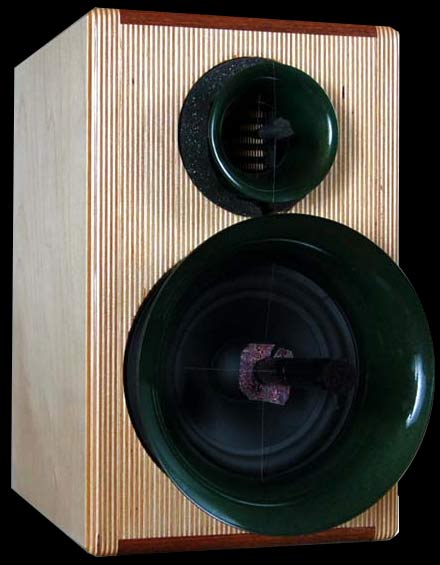


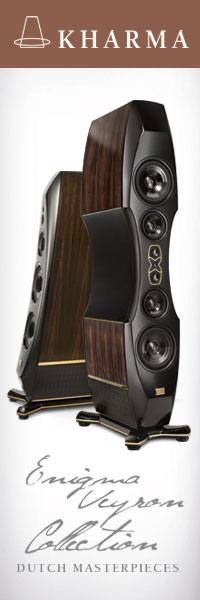

Be the first to comment on: Wavetouch Audio Grand Teton Loudspeaker